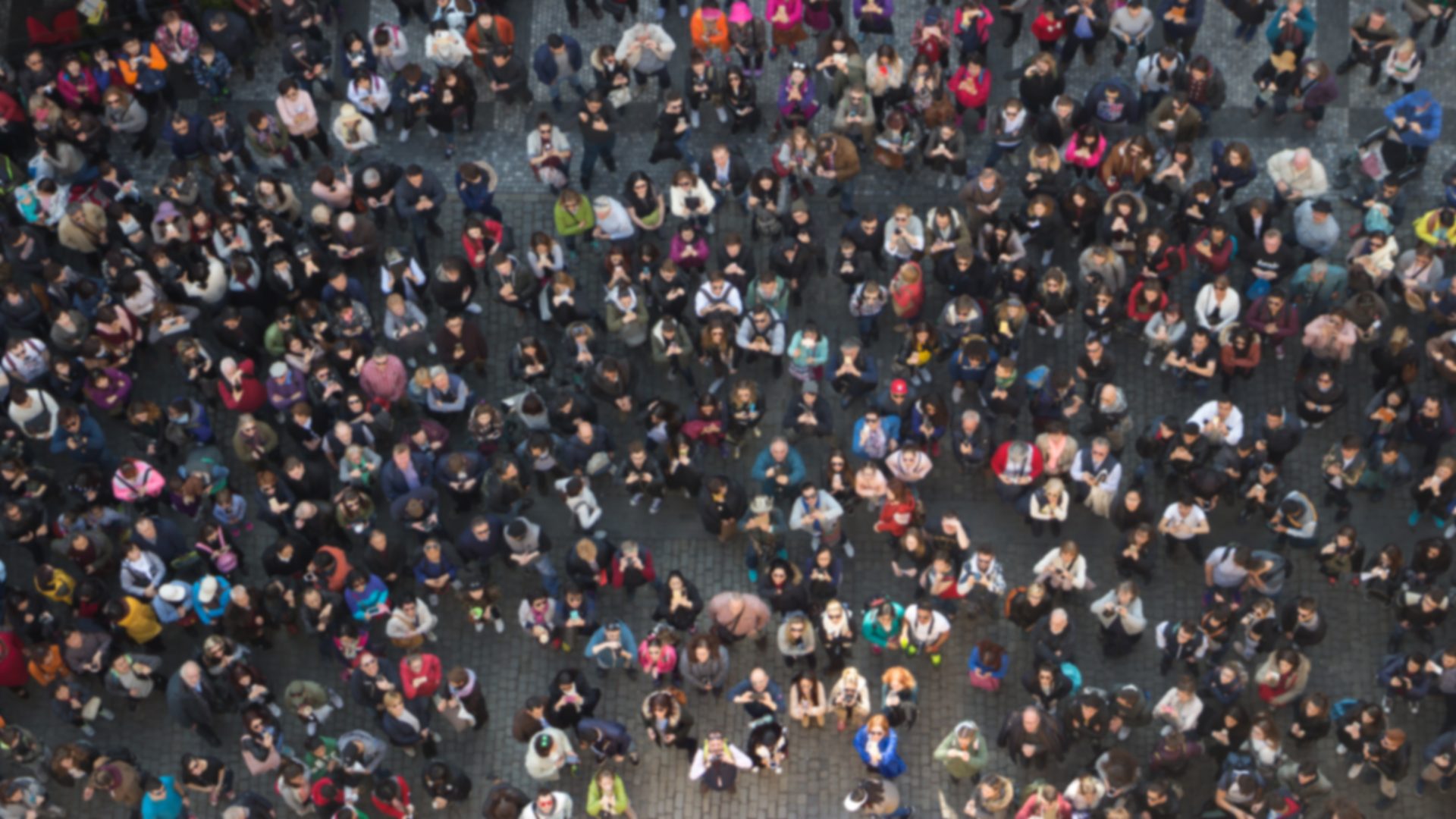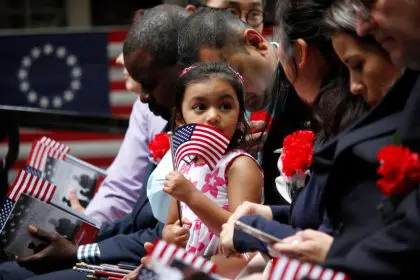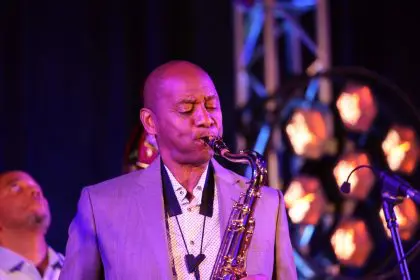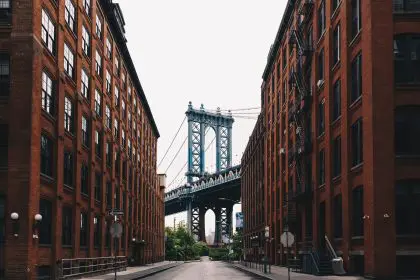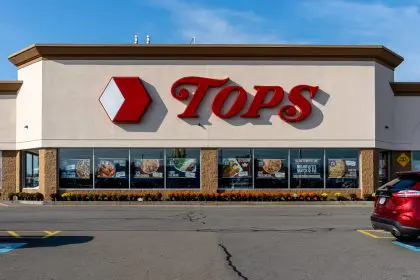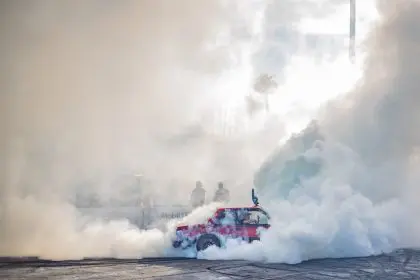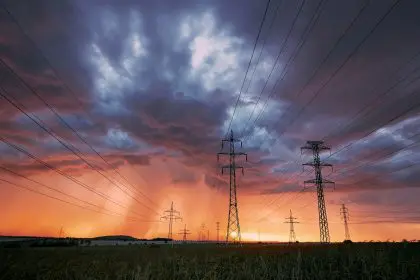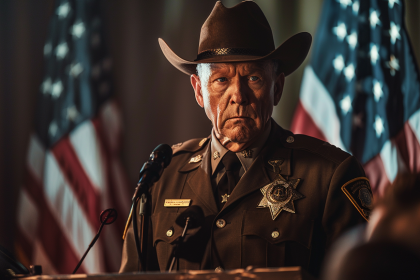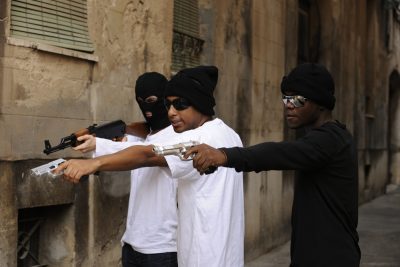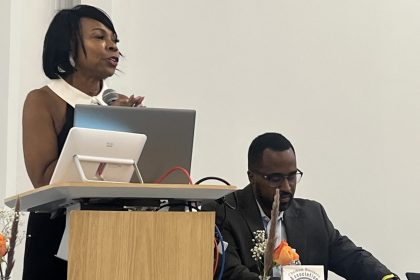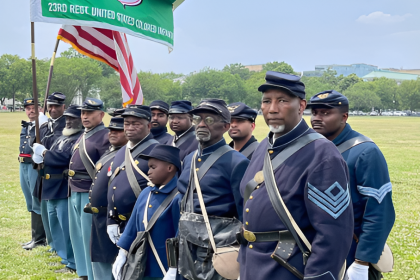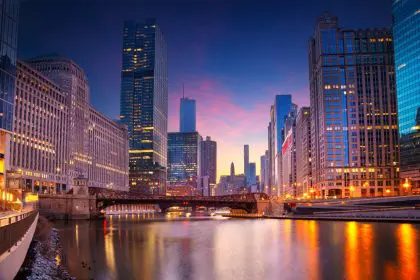Downtown San Francisco erupted in violence Sunday evening as what started as a peaceful immigration solidarity demonstration spiraled into chaotic street confrontations, leaving 60 people arrested and multiple officers injured. The dramatic escalation transformed a community gathering into destructive clashes that forced transit shutdowns and spread property damage across the city center.
The demonstration began with families and activists gathering to show support for immigration protesters in Los Angeles, but quickly devolved into physical altercations between demonstrators and law enforcement that lasted several hours. The violent turn shocked organizers who had planned a peaceful show of solidarity and left the downtown area littered with debris and damaged property.
Emergency responders mobilized across the city as confrontations spread from the initial protest site to multiple downtown blocks, requiring significant law enforcement resources to restore order and protect public safety.
Peaceful gathering transforms into street warfare
The evening began outside the Immigration and Customs Enforcement office on Sansome Street, nestled in the shadow of the TransAmerica Pyramid, where demonstrators initially maintained a festive atmosphere of community support. Early participants included creative protesters, with one individual dressed as an elaborate Statue of Liberty while others displayed rainbow flags and homemade signs with messages like “Softball Dad Against Tyranny.”
The colorful, family-friendly gathering reflected the original intent of showing peaceful solidarity with immigration advocacy efforts happening simultaneously in Southern California. Participants represented diverse community groups who had come together to express opposition to federal deportation operations through constructive civic engagement.
The stark contrast between the early peaceful demonstration and the violence that followed highlighted how quickly public gatherings can deteriorate when confrontational elements override community organizing efforts focused on positive social change.
March toward police lines ignites confrontation
The transition from peaceful demonstration to violent chaos began when segments of the crowd organized a march up Sansome Street, where they encountered a defensive line of San Francisco Police Department officers equipped with riot gear, protective masks, and tactical batons. The officers had positioned themselves to monitor the demonstration while maintaining public safety protocols.
As demonstrators approached the police perimeter, tensions immediately escalated with both sides appearing to prepare for potential conflict. The narrow street created compressed conditions where large crowds and law enforcement officers found themselves in close proximity with limited space for de-escalation or retreat.
The visual confrontation between colorful community demonstrators and uniformed tactical officers created an atmosphere of mounting tension that pervaded the downtown area, setting the stage for the violence that would soon erupt across multiple city blocks.
Objects fly as violence erupts downtown
The first acts of aggression came when individual protesters began hurling objects at the line of police officers, including eggs and glass bottles that shattered on the pavement near the officers’ positions. These initial provocations marked the critical transition from peaceful civic engagement to active hostility that would define the remainder of the evening.
Demonstrators began shouting confrontational chants directed at law enforcement, including aggressive slogans that escalated the verbal confrontation while protesters physically pressed closer to the police line. Some participants moved within inches of officers’ protective equipment while continuing to voice hostile messages.
The increasingly aggressive positioning and verbal provocations created volatile conditions where any sudden movement or additional provocation could trigger broader violence throughout the compressed downtown area where hundreds of people had gathered.
Reinforcements deployed as chaos spreads
Recognizing the escalating danger, dozens of additional police officers in full riot gear rushed to reinforce their colleagues, while motorcycle units established broader security perimeters around the expanding confrontation zone. The arrival of tactical reinforcements appeared to further agitate protesters rather than calm the deteriorating situation.
The increased law enforcement presence coincided with demonstrators seizing metal street barricades and using them as weapons against officers, who fought to maintain their defensive positions while protecting themselves from the improvised weapons. Both sides grasped the same barriers in a violent tug-of-war that quickly devolved into what appeared to be open street fighting.
Physical confrontations spread beyond the immediate protest area as participants engaged in direct combat using metal barriers as both offensive weapons and defensive shields in chaotic melees that blocked traffic and endangered bystanders throughout the downtown corridor.
Property destruction spreads through business district
As street fighting intensified, violence expanded beyond confrontations between protesters and police to include deliberate property destruction targeting businesses and public facilities. Demonstrators threw garbage cans and traffic cones into roadways, creating hazards for emergency responders while blocking vehicle access to the area.
One individual was observed deliberately smashing the glass window of a Chase Bank location, while graffiti appeared throughout the area featuring threatening messages including “Death to ICE” and “Kill a Cop.” The property damage demonstrated how the violence had evolved beyond the original immigration advocacy message to include broader attacks on symbols of authority and commerce.
The spreading destruction required law enforcement to extend their response beyond crowd control to include protection of additional businesses and public infrastructure throughout the downtown business district, straining available resources.
Transit shutdown reflects broader community impact
The Bay Area Rapid Transit system responded to the escalating violence by shutting down a downtown subway station at 9 p.m., citing public safety concerns related to what officials described as a “civil disturbance.” The transit closure affected thousands of commuters and residents who relied on public transportation for evening travel.
The shutdown demonstrated how protest violence created consequences extending far beyond immediate participants to impact broader community members who had no involvement in the demonstration. Essential city services were disrupted as emergency resources were redirected to address the ongoing confrontations.
Public safety officials struggled to balance crowd control requirements with maintaining essential transportation and emergency services for residents throughout the affected downtown area, highlighting the broader community costs of the violence.
Communication breakdown hampers resolution
Throughout the confrontations, police officers attempted to communicate with demonstrators through loudspeaker systems, but audio quality problems made instructions nearly impossible to understand for participants in the crowd. The garbled communications appeared to include dispersal orders, though the unclear messaging may have contributed to continued confusion and escalation.
Some demonstrators within the crowd made efforts to encourage others to move away from confrontation zones and de-escalate tensions, but their peacekeeping attempts were overwhelmed by individuals who appeared determined to continue fighting with law enforcement officers regardless of consequences.
The breakdown in effective communication between authorities and protesters eliminated opportunities for peaceful resolution while contributing to the prolonged nature of the violent confrontations that spread across multiple downtown blocks.
Arrests and injuries mount as night progresses
The final accounting of Sunday’s violence included 60 arrests across various charges related to the confrontations, along with at least two injured police officers and damaged public transit vehicles. The San Francisco Police Department documented the scope of arrests and injuries while beginning investigations into the most serious criminal activities.
Property damage extended throughout the downtown corridor, with broken windows, threatening graffiti, and scattered debris marking the path of violence across multiple city blocks. Cleanup and repair costs represented additional consequences that would impact the broader San Francisco community for weeks following the demonstration.
The arrested individuals faced charges ranging from disturbing the peace to assault on police officers, though specific details about charges and identities were not immediately released by authorities pending ongoing investigations.
Community leaders assess aftermath
The transformation of a solidarity demonstration into violent street confrontations raised serious questions about protest organization, crowd management, and the challenges of maintaining peaceful civic engagement during periods of heightened political tension. Community advocacy groups expressed concern that the violence had completely overshadowed the original immigration support message.
The incident highlighted ongoing tensions between activist communities and law enforcement while demonstrating the difficulties of managing large public gatherings when confrontational elements override peaceful organizing efforts. The violence also strained relationships between different advocacy organizations working on immigration issues.
Moving forward, community leaders face significant challenges in organizing future demonstrations while ensuring that legitimate advocacy efforts are not undermined by individuals seeking conflict rather than constructive political engagement through peaceful civic participation.

